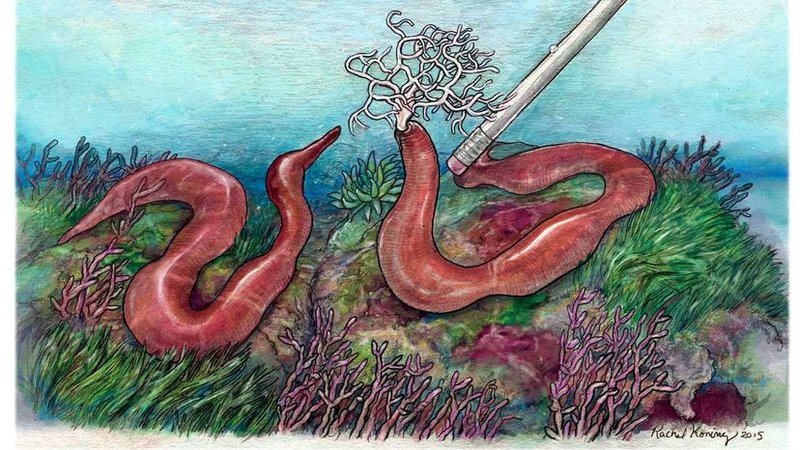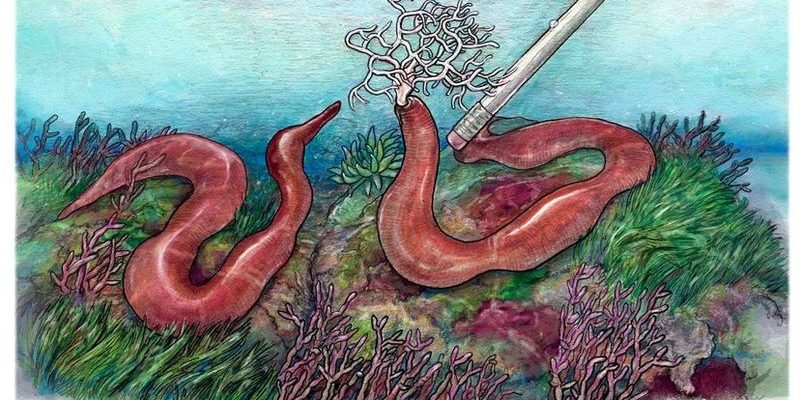
Bootlace worms, scientifically known as *Lineus longissimus*, are mesmerizing creatures that inhabit the shallow waters of the North Atlantic, particularly around the coasts of Europe. Often found in tidal zones, they thrive in sandy or muddy environments. Just imagine walking along the beach and coming across something that looks like a giant strand of spaghetti. Yes, that’s a bootlace worm!
You might be wondering why they’re called bootlace worms. The name comes from their long, thin bodies that resemble bootlaces. While they may look like simple marine creatures, they have a complex anatomy and behavior that allow them to grow to astounding lengths. Let me explain how they do it.
The Anatomy of a Bootlace Worm
Bootlace worms are unique in their structure. Unlike many other worms, they have a long, segmented body that can stretch multiple meters. Their body is made up of many repeating segments, which makes them incredibly flexible. This flexibility allows them to navigate through their environments, wriggling through sand and mud.
What’s fascinating is how they grow. Bootlace worms can regenerate if they lose parts of their body, which becomes essential when you consider how they interact with the world. If a predator tries to snap at one, they can lose a segment and still survive. Imagine if you could grow your arm back after a mishap!
These worms are also equipped with a unique nervous system. Instead of having a centralized brain like many animals, bootlace worms have a decentralized system that runs lengthwise down their body. This means they can react and move quickly to threats, making them pretty resilient in their aquatic habitats.
The Growth Process: How They Get So Long
Now, let’s talk about how bootlace worms achieve those jaw-dropping lengths. Their growth process isn’t just about time; it’s also about conditions. Bootlace worms have a relatively long lifespan, living for several years. During this time, they continuously grow, especially in optimal conditions.
Their growth can be influenced by factors like temperature, food availability, and environmental conditions. In warmer waters with abundant food sources, bootlace worms can grow at a faster rate. They primarily feed on microorganisms, which are plentiful in their coastal habitats. It’s all about having the right ingredients for growth!
Here’s the thing: as they grow longer, they become more challenging to observe. A worm that’s over 50 meters long is likely to remain mostly hidden under the sand or mud, making them somewhat elusive to researchers. The longer they grow, the more they blend into their environment, just like a chameleon.
Habitat and Behavior
Bootlace worms prefer habitats with soft substrates, like mud and sand, which allows them to burrow. They spend a lot of time hidden away, only surfacing for feeding or reproduction. If you were to dig in the sand at low tide, you might find one or two nestled in their cozy homes.
Their behavior is intriguing, too. Bootlace worms are mostly nocturnal, meaning they’re more active at night. This can help them avoid predators and makes them less vulnerable to fishing activities during the day.
Interestingly, when they do reproduce, bootlace worms can undergo a fascinating transformation. They can switch genders, allowing for flexible mating options. This adaptability is crucial in ensuring their population thrives, even in challenging environments.
What Do Bootlace Worms Eat?
Diet is essential for any creature’s growth, including bootlace worms. These marine worms primarily feed on tiny particles, including plankton and organic debris. They have specialized structures called tentacles that help them capture their food as it floats by.
You might picture them waiting patiently, like a kid at a candy store, ready to snatch up anything that drifts into reach. They consume microorganisms and decaying matter, which provides them with the nutrients they need to grow.
In areas rich in nutrients, bootlace worms thrive, allowing them to grow longer and larger. Their ability to adapt to their environment ensures that they can find food even in less-than-ideal conditions, contributing to their impressive size.
The Role of Bootlace Worms in the Ecosystem
Bootlace worms play a vital role in their ecosystems. By feeding on detritus and organic material, they help break it down and recycle nutrients back into the environment. This process supports the overall health of marine ecosystems, making them essential players in coastal habitats.
Also, being part of the food web, they serve as prey for various fish and other marine animals. Their size and regenerative abilities might seem impressive, but they are not invincible. They face threats from predators and environmental changes, which can impact their populations.
Ultimately, their contributions to the ecosystem help keep everything balanced. Think of them as nature’s cleanup crew, busy underwater, ensuring a healthy marine environment for various creatures.
Threats to Bootlace Worms
Despite their fascinating abilities, bootlace worms face several threats in their habitats. Pollution, climate change, and overfishing can significantly affect their populations.
Increased pollution can lead to habitat degradation, while rising temperatures can impact the availability of food. Overfishing can disrupt the balance in marine ecosystems, reducing the numbers of potential predators that maintain their populations.
Conservation efforts are essential to safeguard these intriguing creatures. If you’re a fan of marine life, supporting clean water initiatives can help protect their habitats and ensure bootlace worms continue to thrive for generations to come.
Bootlace worms are a remarkable example of how nature can surprise us. Growing to lengths over 50 meters, these slimy wonders are not only impressive but also play a crucial role in their ecosystems. Their unique adaptations, from regenerative abilities to flexible diets, make them fascinating creatures worthy of our attention.
Next time you’re at the beach, take a moment to appreciate the hidden wonders beneath the sand. Who knows, you might just be walking over a bootlace worm living its life, quietly growing beneath your feet! Whether you’re a marine enthusiast or just curious about the ocean, understanding these creatures opens up a whole new world of marine biology. So let’s continue to explore and protect the incredible diversity that our oceans hold!

